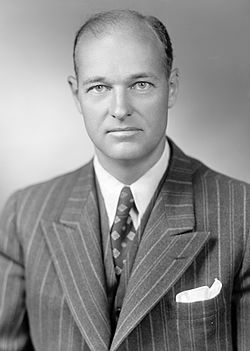| ||
|---|---|---|
Senator from Missouri
33rd President of the United States First term Second term Presidential and Vice presidential campaigns Post-presidency  | ||
The Truman Doctrine is a U.S. foreign policy that pledges American support for democratic nations against authoritarian threats. [1] The doctrine originated with the primary goal of countering the growth of the Soviet bloc during the Cold War. It was announced to Congress by President Harry S. Truman on March 12, 1947, [2] and further developed on July 4, 1948, when he pledged to oppose the communist rebellions in Greece and Soviet demands on Turkey. More generally, the Truman Doctrine implied U.S. support for other nations threatened by Moscow. It led to the formation of NATO in 1949. Historians often use Truman's speech to Congress on March 12, 1947, to date the start of the Cold War. [3]
Contents
- Turkish Straits crisis
- Greek crisis
- Truman's address
- Long-term policy and metaphor
- See also
- References
- Bibliography
- External links
Truman told Congress that "it must be the policy of the United States to support free peoples who are resisting attempted subjugation by armed minorities or by outside pressures." [4] Truman contended that because totalitarian regimes coerced free peoples, they automatically represented a threat to international peace and the national security of the United States. Truman argued that if Greece and Turkey did not receive the aid, they would inevitably fall out of the United States' sphere of influence and into the communist bloc, with grave consequences throughout the region.
The Truman Doctrine was informally extended to become the basis of American Cold War policy throughout Europe and around the world. [5] It shifted U.S. policy toward the Soviet Union from a wartime alliance to containment of Soviet expansion, as advocated by diplomat George F. Kennan.





